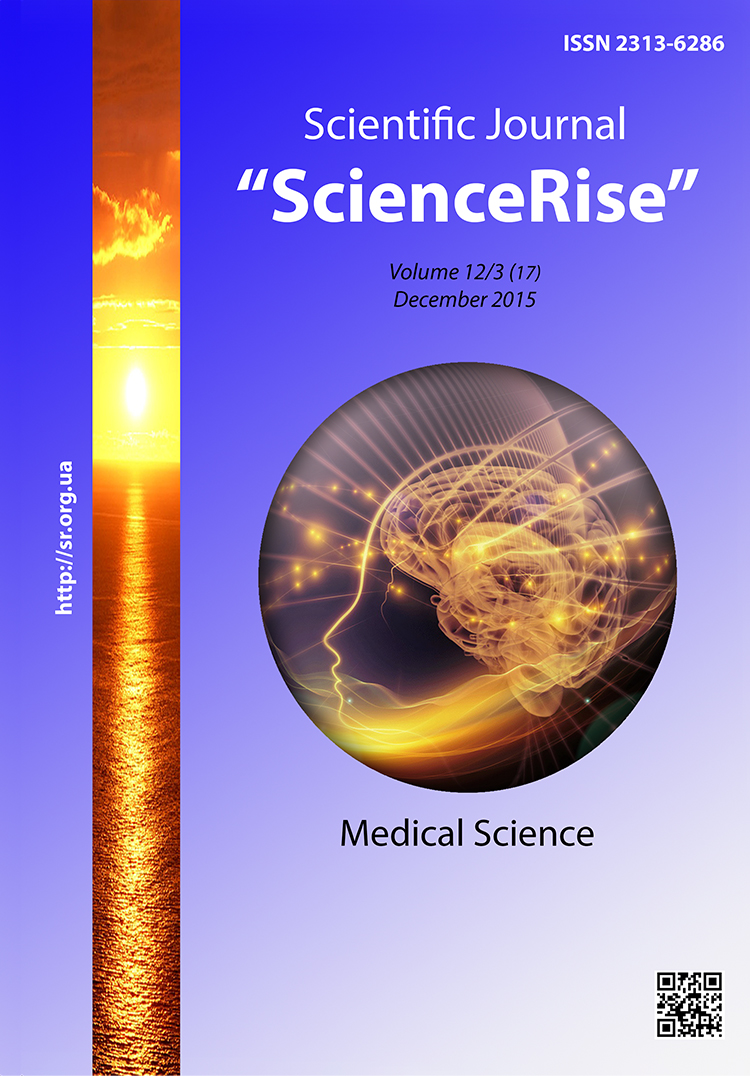The central hemodynamics special features of sportsmen with a glance to changes in heart rate variability as the response on the training loads
DOI:
https://doi.org/10.15587/2313-8416.2015.57081Keywords:
central hemodynamics, heart rate response on loads, highly qualified sportsmenAbstract
Aim: to analyze indices of the central hemodynamics of highly qualified sportsmen at rest taking into account HF-components of heart-rhythm variability after training loads.
Methods of research. To study the special features of the central hemodynamics there was used spiroarteriocardiorythmography (SACR) that allows to detect in the regimen of momentary registration indices that characterize heart activity (according to ECG data in the first lead), vessels (systolic arterial pressure (SAP) and diastolic arterial pressure DAP)) on the middle phalanx of the finger by Penaz method, respiratory system (according to an ultrasound spirometry data). Statistical analysis was carried out using nonparametric methods with determination of Mann-Whitney criterion.
Results. The study of influence of training loads in the period before competitions allowed to establish that after training load in several sportsmen were noticed the low values of HF-component of HRV(58,1%), and in other ones the values of HF-components of HRV were in the limits of population norm (38,7%). This fact indicated the differences of HRV responses in different sportsmen that further formed two groups of research ЕG1 and ЕG2.
An analysis of central hemodynamics demonstrated that in most sportsmen from ЕG1 (88,2%) and ЕG2 (64%) was noticed the hypokinetic type of blood circulation. Hyperkinetic type of blood circulation was not registered in any group. The comparison of separate indices of central hemodynamic demonstrated that final diastolic volume (FDV), final systolic volume (FSV) and momentary volume of blood (MVB) are reliably higher in experimental group (ЕG2) (р < 0,01). In ЕG1 was noticed the reliably more peripheral resistivity of vessels (PRV) (р < 0,05).
Conclusion. The study of central hemodynamics in groups of sportsmen whose response on training loads differed on the level of high-frequency component activity of the heart rate variability allowed establish that these changes are determined by the reliable differences of central hemodynamics at rest. First of all it concerns differences of SAP, FDBC, FSV, SV, MVB and PRV in sportsmen. The cited differences testify the more effective parameters of central hemodynamic in sportsmen whose response on training load is the decrease of force of heart rate variability in high-frequent diapason below265,7 ms2
References
Cottin, F., Medigue, C., Papelier, Y. (2008). Effect of heavy exercise on spectral baroreflex sensitivity, heart rate, and blood pressure variability in well-trained humans. AJP: Heart and Circulatory Physiology, 295 (3), 1150–1155. doi: 10.1152/ajpheart.00003.2008
Luijkx, T., Cramer, M. J., Prakken, N. H. J., Buckens, C. F., Mosterd, A., Rienks, R. et. al. (2012). Sport category is an important determinant of cardiac adaptation: an MRI study. British Journal of Sports Medicine, 46 (16), 1119–1124. doi: 10.1136/bjsports-2011-090520
Moreno, I. L., Pastre, C. M., Ferreira, C., de Abreu, L. C., Valenti, E. V., Vanderlei, L. C. (2013). Effects of an isotonic beverage on autonomic regulation during and after exercise. Journal of the International Society of Sports Nutrition, 10 (1), 1–2. doi: 10.1186/1550-2783-10-2
Bravi, A., Longtin, A., Seely, A. J. (2011). Review and classification of variability analysis techniques with clinical applications. BioMedical Engineering OnLine, 10 (1), 90. doi: 10.1186/1475-925X-10-90
Huikuri, H. V., Perkiömäki, Ju. S., Maestri, R., Pinna, G. D. (2009). Clinical impact of evaluation of cardiovascular control by novel methods of heart rate dynamics. Philosophical Transactions of the Royal Society A: Mathematical, Physical and Engineering Sciences, 367 (1892), 1223–1238. doi: 10.1098/rsta.2008.0294
Romanchuk, A. P., Pisaruk, V. V. (2013). Zminy pokaznykiv centralnoi' gemodynamiky kvalifikofanyh sportsmeniv pry testuvanni z vykorystanyam kerovanogo dyhanya ta i'h otsinka [Change of central hemodynamics of qualified athletes for testing the use of controlled breathing and evaluation]. Pedagogika, psyhologiya ta medyko-biologichni problemy fizychnogo vyhovanya i sportu, 11, 77–84. doi: 10.6084/m9.figshare.817930
Romanchuk, A. P. (2013). The Complex Approach to a Multipurpose Estimation of a Sportsmen Condition, In: Polysystemic Approach to School, Sport and Environment Medicine, M.Karganov ed., - OMICS Group eBooks, 54–86. doi: 10.4172/978-1-63278-000-3-001
Pankova, N. B., Bogdanova, E. V., Karganov, M. Y., Eygel, M. Y., Kuznetsov, P. P., Simakov, O. V. (2013). Poslenagruzochnaya dynamika pokazateley serdechno-sosudistoy sistemy u yunykh sportsmenov (rezultaty spiroarteriokardioritmografiyu) [After-load Dynamics of Cardiovascular System Parameters in Young Athletes (results obtained by method of Spiroarteriocardiorythmography)] Valeology, 3, 54–60.
Romanchuk, A. P., Guziy, O. V., Petrov, E. P., Braslavsky, I. A., Perevoshchikov, Y. A. (2015). Changing the parameters of variability of the cardiorespiratory system under the influence of the training load. Book of Abstracts of the 20th Annual Congress of the European College of Sport Science. Malmö – Sweden, 604–605. doi: 10.13140/RG.2.1.3223.0566
Pivovarov, V. V. (2006). Spiroarteriocardiorytmograf. Med. Tekh, 1, 38–41.
Pankova, N. B. (2013). Otsenka sostoyaniya serdechno-sosudistoy sistemy zdorovogo cheloveka [The assessment of the cardiovascular system state in healthy people]. Lambert Academic Publishing, 152.
Downloads
Published
Issue
Section
License
Copyright (c) 2015 Оксана Володимирівна Гузій

This work is licensed under a Creative Commons Attribution 4.0 International License.
Our journal abides by the Creative Commons CC BY copyright rights and permissions for open access journals.
Authors, who are published in this journal, agree to the following conditions:
1. The authors reserve the right to authorship of the work and pass the first publication right of this work to the journal under the terms of a Creative Commons CC BY, which allows others to freely distribute the published research with the obligatory reference to the authors of the original work and the first publication of the work in this journal.
2. The authors have the right to conclude separate supplement agreements that relate to non-exclusive work distribution in the form in which it has been published by the journal (for example, to upload the work to the online storage of the journal or publish it as part of a monograph), provided that the reference to the first publication of the work in this journal is included.

